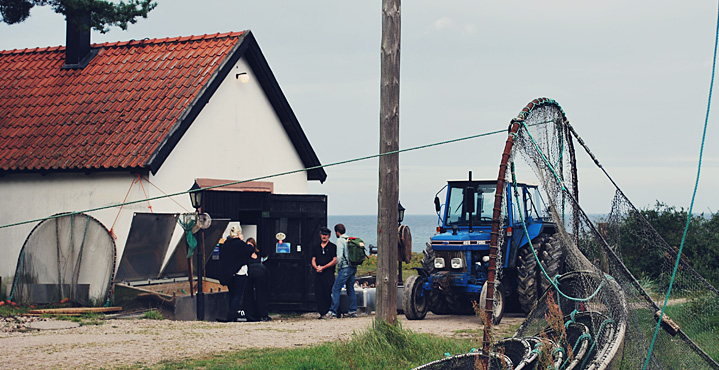
LEADER (”Liaison Entre Actions de Développement de l’Économie Rurale”) meaning ’Links between the rural economy and development actions’) is a local development method which allows local actors to develop an area by using its endogenous development potential.
The LEADER approach has been an important component of EU Rural Development Policy for over 20 years. Since 2007 it has been funded by the European Agricultural Fund for Rural Development (EAFRD). In the period 2007-2013 it was successfully applied in fisheries areas as Axis 4 of the European Fisheries Fund and since 2014 this approach, called “Community-Led Local Development” (CLLD) can be implemented not only in the EAFRD (where it is still called LEADER), but also in the European Maritime and Fisheries Fund (EMFF), the European Regional Development Fund (ERDF) and the European Social Fund (ESF).
[https://enrd.ec.europa.eu/en/leader]
The Local Development Strategy LEADER Southeast Scania 2014-2020 (extended to 2024)
For the new programme period of 2014–2020 (extended to 2024), LEADER Southeast Scania is focusing on key aspects as competence enhancement, sustainable production, nature and enhanced attractiveness for the business area, especially within the food sector. A Southeast Scania characterized by sustainable growth and accessibility.
The four municipalities included in LEADER Southeast Scania: Simrishamn, Tomelilla, Sjöbo and Ystad, will work together within the Agricultural Fund for Rural Development, the Regional- and Social Funds. There will be an enhanced cooperation between the Southeast Scania members and the municipalities of Bromölla, Kristianstad, Osby and Östra Göinge towards local development through the Maritime and Fisheries Fund, administrated by the Leader office in Southeast Scania. To reach the vision i for LEADER Southeast Scanias strategy with sustainable growth and accessibility, there are three main target goals:
- Increased cooperation and exchange within/between businesses within food sector (near produced) and to develop new local markets/arenas for sales and businesses.
- Enhanced communication and accessibility to increase the power of attraction for the area, for the inhabitants as well as for visitors and businesses.
- An area that protect and maintain the values of the nature and cultures and that preserves a good water quality.
The growth in the area should be characterized by sustainability and where the business owners feel a sense of stability and possibility to invest even further in their business. The key aspect for successful development in trade and industry has been exchange in experience. Even the tourism industry has developed positively from this strategy, where more actors have been included in the business and the high season has extended with even higher quality. Communication is vital for development – both physical and digital communication has enhanced and become more wide spread and available. Even the accessibility to education, employment and local service has enhanced. This influences the demographic figures positively.
There are four target areas that are crucial for the continuing development of LEADER Southeast Scania. These are Tourism industry, local production, the youth and the environment and climate. We are also focusing on culture and leisure to enhance well-being. The area is rich in cultural events with the potential to grow even further. Different sport activities and outdoor life can be a contributing factor to extend the high season and easy access to information of where these places are and what kind of activities are offered of importance. This will also contribute to more visitors and actors in the area It is of relevance that the activities are climate friendly.
But the greatest and most important resource a local area have is its people. It is the people that creates possibilities and that is why it is important that people in our CLLD area feel that they thrive, have a positive view about the future and want to stay in the area. An important aspect for this to succeed is to include young people and newly Swedes (such as people with different ethnic/cultural background, no matter if the person is a Swedish citizen or not). Open society and tolerance is most important. Focusing on projects to stimulate higher life quality for young and newly Swedes can contribute to a more sustainable growth in the area.